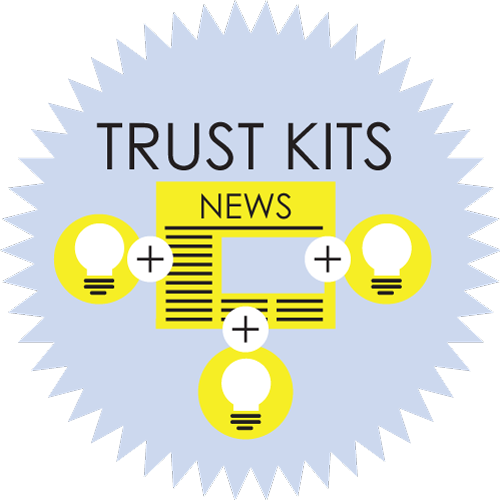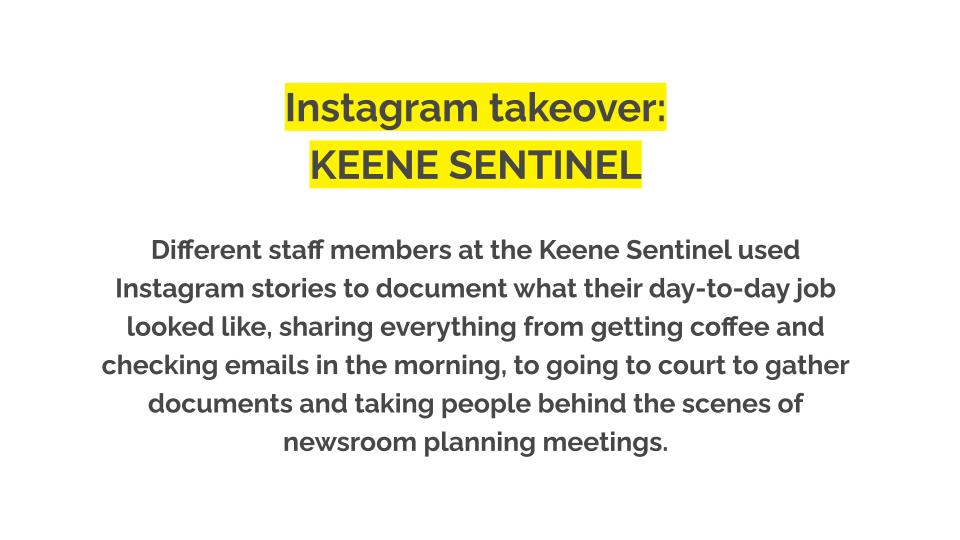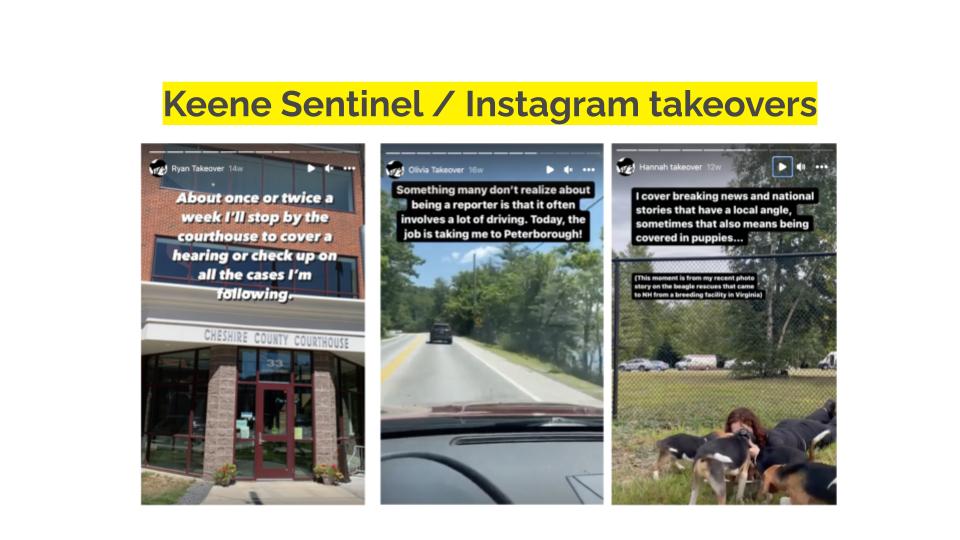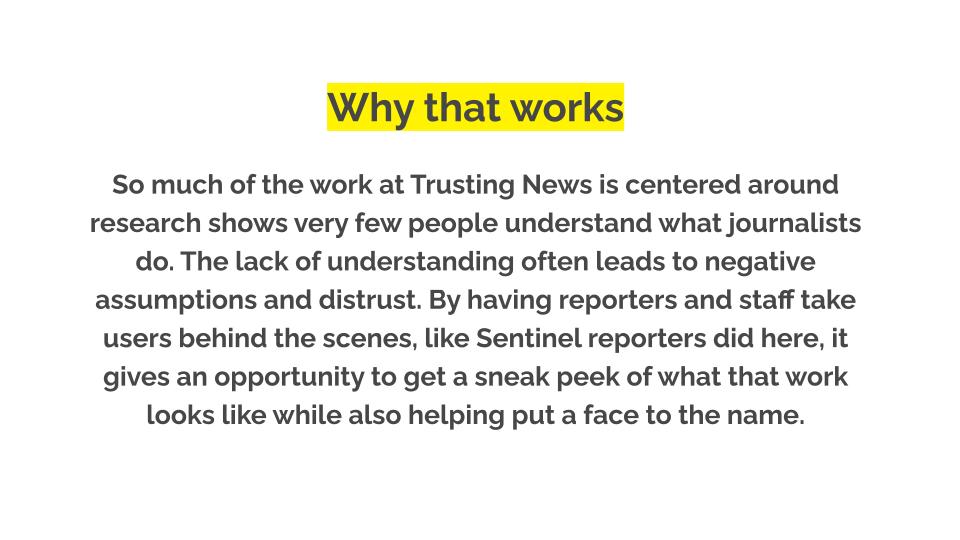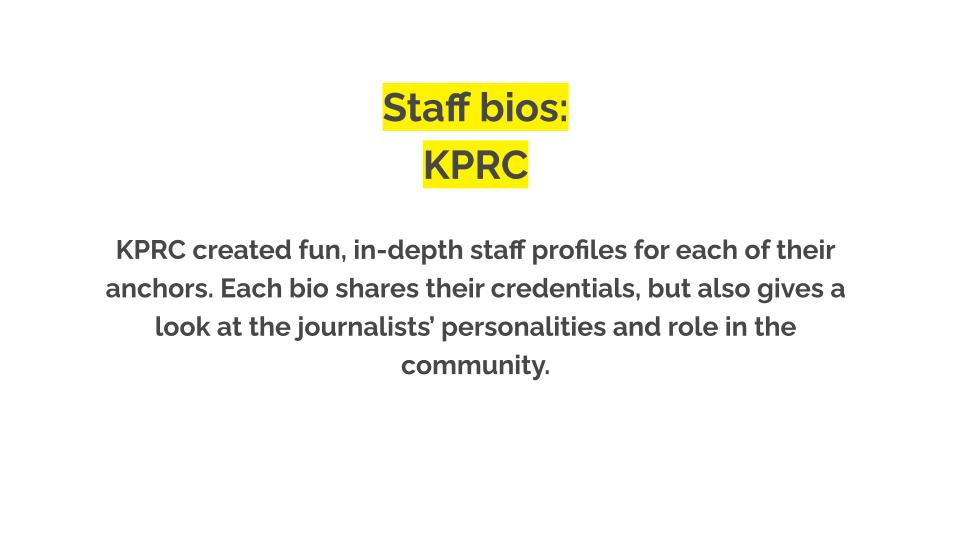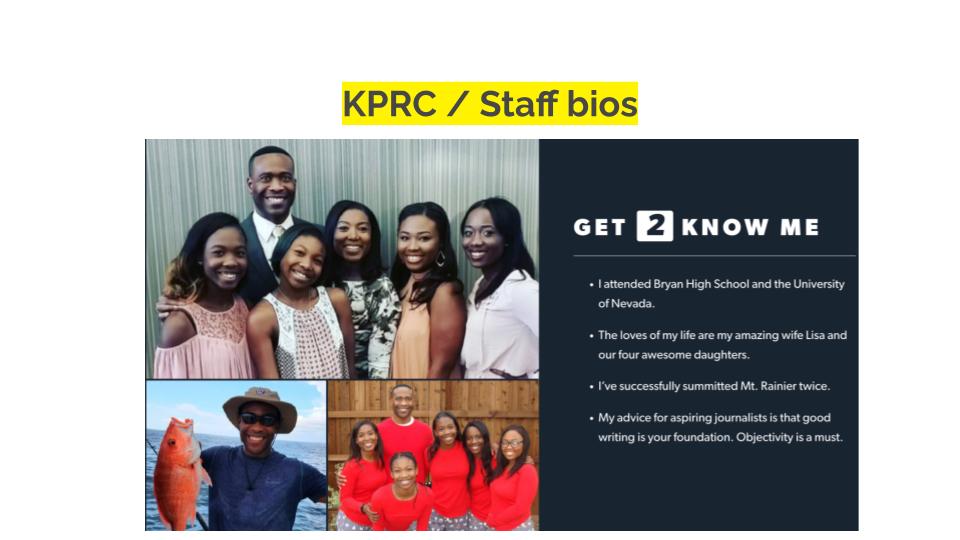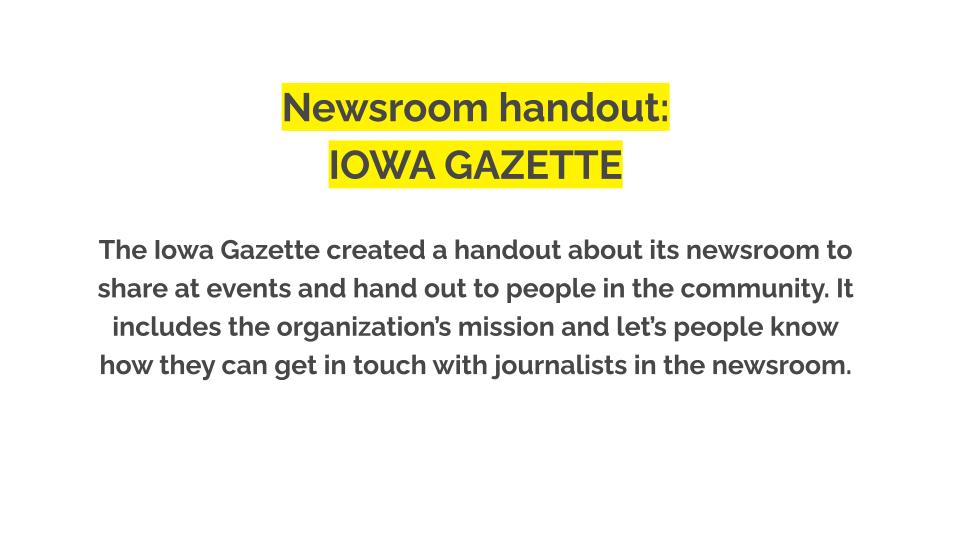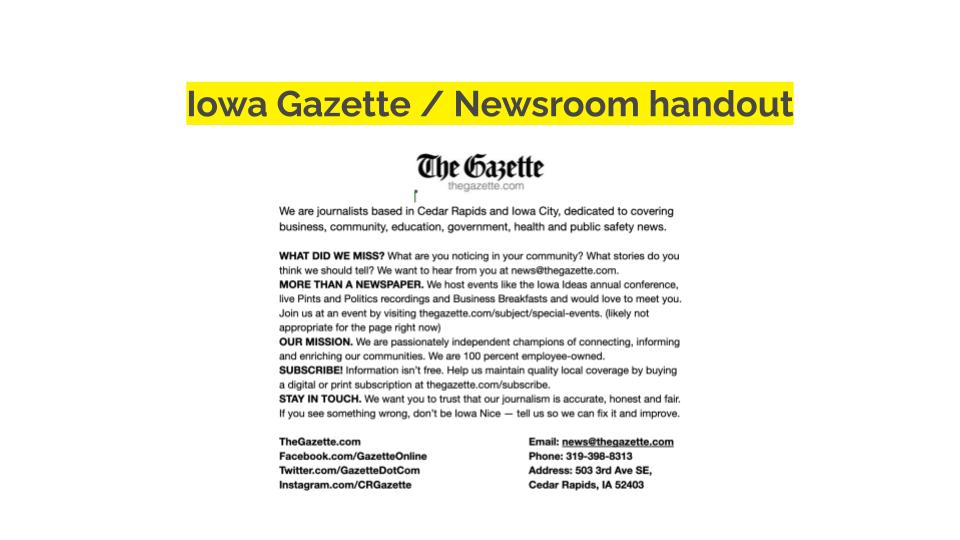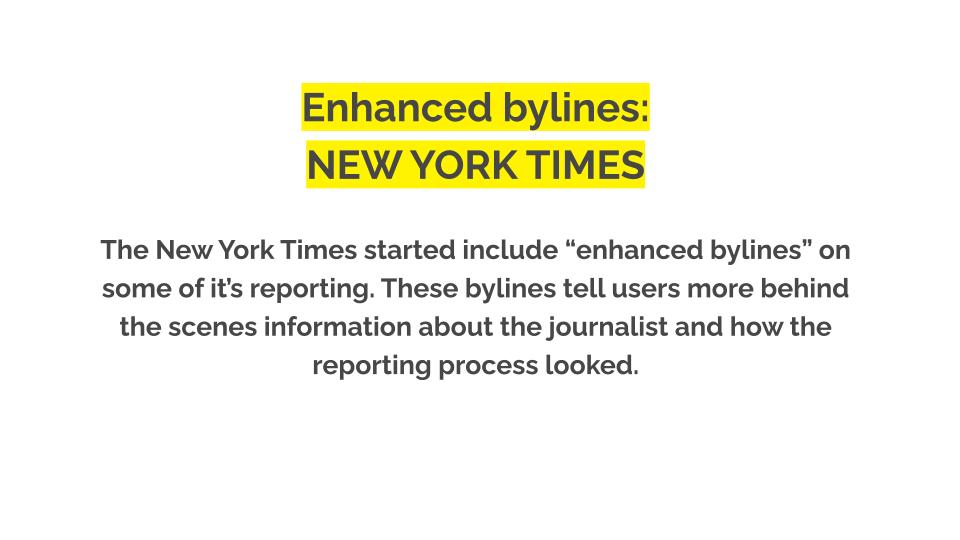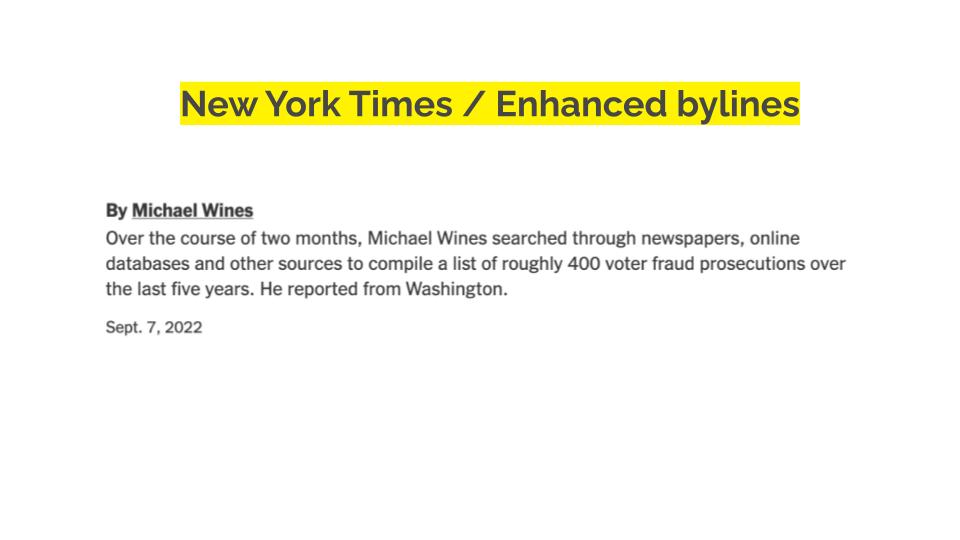ENGAGEMENT
Talk about who you are
Who do you trust, and why? If we think about this question generally, we most likely will start with people we know or have a relationship with. We might have known some of them for years. Others we may have only recently met. Maybe there are some people we have never met in person but have developed a relationship with through social media.
Trust is often based on how well we know or understand someone. It’s true in personal relationships, and it’s also true for news brands or individual journalists.
That’s why it’s important for journalists to share who they are with their community. Some people may feel more comfortable sharing more than others, and that’s fine. The key is to help people get to know who is behind the news.
Trust is based on how well we know someone. It’s true in relationships, and it’s also true for news brands and journalists.

Goals
This Trust Kit helps you:
- Learn what to share about who you are to help build trust
- Understand the importance of building empathy and humility into your reporting
- Know how and where to share information about who you are
- See examples of how other journalists have shared who they are
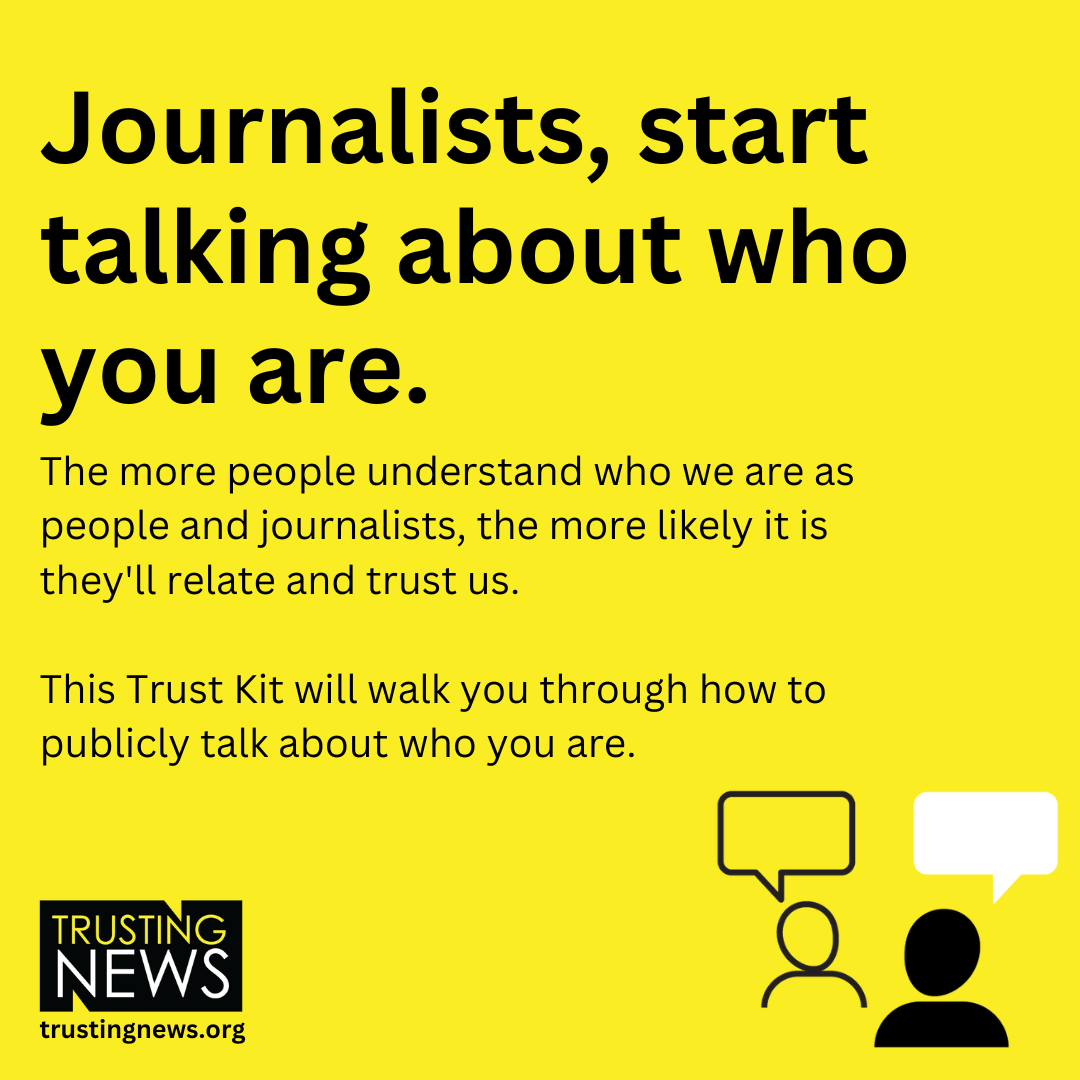

What to share about who you are
At Trusting News we think it is important everyone in the newsroom has an opportunity to share something about who they are. Whether it is a staff bio, a list of staff members, an annual staff photo or through social media accounts, everyone in the newsroom (not just on-air talent or the reporters) should be offered an opportunity to participate in showing the public who contributes to your news process — and what their diverse sets of experiences are.
Luckily, there are a lot of ways journalists can share who they are publicly, including staff bios, social media, personal websites, community events, etc. Whatever format it takes, the good news is it doesn’t all have to include the same information or look exactly the same. Click or tap the blue boxes to expand each section.
The basics
We do think there are some elements journalists should feel comfortable being transparent about and sharing with their community. They include:
-
- Information about the journalists’ role in the newsroom. Explain what they do without using industry jargon or insider newsroom language.
- A photo. (If you are reporting in a place where freedom of the press or freedom of speech is threatened we know this may not be possible. Your safety comes first and should be prioritized over including your photo.)
- A way to contact the journalist directly — or at the very least the right department of the newsroom. (Again, your safety comes first and should be prioritized over including contact information.)
- Any connection to the local community. Are they from the area? Have they previously worked in the area? This helps show a commitment to the community and also can help the journalist feel more relatable to the community.
- Your previous work/education experience.
Beyond the basics
For years journalists have been told to leave who they are at home. From an ethical standpoint, this advice is rooted in the importance of avoiding conflicts of interest, or the appearance/perception of a conflict of interest, which can be just as detrimental to being considered a trustworthy news source.
But, at the end of the day, connection plays a big role in how much empathy and trust we extend to one another. As humans, when we feel like we know someone, or have a degree of connection or similarity, we’re much more willing to give people the benefit of the doubt.
This goes for journalists too. Just like it’s easier for us to have empathy for someone we know personally or feel similarities to, it’s typically easier for people to believe journalists are coming from a good place when they have a baseline understanding about who the journalist is, including their experience and background.
To make those connections and be seen as people, it’s OK to talk about who you are, beyond the basics mentioned above. Sharing some information about how you grew up, what you’ve experienced in your life, what you’re currently interested in or doing outside of work, etc., can be an effective way to add some dimension to people’s understanding of your work. It can also lend credibility to your reporting and transparency around what perspectives — and potential biases — people might think you bring to your reporting. (Read more about the balance between sharing who you are and becoming the story, along with ethical issues to consider in the next section).
Here are some examples of what else you may consider sharing:
- What you are passionate about
- Funny facts
- Other talents (or what you struggle with):
- Other jobs you’ve had
- Your family (past and present)
- Hobbies
- Organizations you’re involved in
Sharing any of the above can help people find you relateable. It also can help people see why you have credibility or expertise to cover a topic. It also can provide transparency around why you choose stories or cover stories the way you do.

Ethical considerations and the human side of reporting
As a journalist, you should be striving to connect with your audience and humanize your reporting (doing so can help build trust). As mentioned above, while sharing personal information can foster engagement, it also raises ethical concerns.
Below are some ethical issues to consider and some tips for balancing those issues while still sharing who you are.
The ethical issues:
- Privacy. Divulging excessive personal information risks your own privacy and could compromise your safety. Personal details, such as home addresses, family members’ identities, or financial information, can become public, leaving you vulnerable to harm or harassment. Also, once something is online, it’s always there.
- Conflict of Interest. Personal interests or relationships could create conflicts of interest or the perception of a conflict (which can be just as problematic when it comes to someone trusting or thinking your stories are fair). Oversharing personal information can divert attention away from the main subject matter. Journalists may unintentionally become the center of the story instead of the issues they are reporting on, leading to a loss of focus and impact.
- Perception of Bias. Revealing personal information may give the impression of bias, even if it does not affect your reporting. Audience members might question the journalist’s ability to provide fair and accurate reporting, potentially undermining the credibility of their work.
Our recommendations:
- Define Boundaries. It can be helpful to establish boundaries between personal and professional lives. Reflect on which personal information is relevant to the story and whether sharing it enhances understanding and helps provide context to the story or detracts from the purpose and ability for people to find the story helpful.
- Focus on Expertise. Emphasize your professional expertise and experiences related to the topic being covered. By highlighting your knowledge and skills, you establish credibility without delving into personal information that may distract from the story.
- Support your staff. The dark side of engagement can be personal harassment. To build trust in the newsroom, there needs to be support in place for journalists who are targets of online abuse (especially women and journalists of color, who are at a higher risk). Get started with this International Women’s Media Foundation resource: A Guide to Protecting Newsrooms and Journalists Against Online Violence
- Transparent Disclosure. When personal interests or relationships could potentially present a conflict of interest, practice transparency by disclosing those relationships. Clearly communicate any potential biases and take necessary steps to mitigate their influence on your reporting.
- Prioritize the Story. Keep the focus on the subject matter, ensuring that your reporting remains informative, helpful and fair. Avoid inserting personal anecdotes or excessive personal information that could overshadow the story’s importance.
Bottom line: At Trusting News we are not here to tell you or other journalists how much or how little to share about yourself. We believe acting human and sharing who you are can build relationships with members of your community and make your community better. But, you should always disclose your connections to a story and be transparent with your editors. You should also be honest with yourself about those connections, beliefs and feelings. This can help you decide if you can still fairly and accurately cover the story and what kind of public disclosure, if any, should be included.

How (and where) to share
Once you’ve decided what you think would be effective to share about you and your reporting, think through how to best share this information with your audience. You can do this through a staff bio or on an about page, or share on social media or in-person events.
Staff bios
Most newsrooms have journalists write a staff bio. That’s good, because being able to identify who a reporter is, their expertise and experience can lead to credibility which helps build trust.
We know it can be a lot of work to review and update standing elements like staff bios. For step-by-step guidance on crafting a staff bio, use this handout.
To help an entire newsroom get bios up to date follow these steps:
- Identify some basic elements every staff member should share about themselves
- Provide detailed examples of what other information might be appropriate or fun for people to include.
- Assign someone to shepherd the project, collect the bios and nudge colleagues to complete it.
Another idea we’ve heard: Hold a meeting and share examples of bios similar to what you’re expecting from them or some for inspiration. Then have people complete their own bio before they leave. Our newsroom partners at the Atlanta Journal-Constitution led their newsroom through a staff bio update. You can see examples of what they created here.
Once these bios are created they can be added to individual stories, shared on social media, collected on one page (like an “About Us” page), etc. You can also turn a staff bio into a reporter mission statement. Learn how to do that here.
Social media and online platforms
Social media and other online platforms can be an effective way for people to get to know who journalists are.
One way you can do this is by introducing your staff on platforms designed for interpersonal connection, like Instagram and TikTok. Not only is this helpful for building those connections, but it can also be a good opportunity to share information about how journalists do their job.
So much of the work at Trusting News is centered around research showing very few people understand what journalists do. That lack of understanding often leads to negative assumptions and distrust. By having reporters and staff take users behind the scenes, it gives an opportunity to get a sneak peek of what that work looks like while also helping put a face to the name.
One of our newsroom partners, the Keene Sentinel did this using Instagram. The newsroom had staff members use the newsroom’s branded account to document what their day-to-day job looked like, sharing everything from getting coffee and checking emails in the morning, to going to court to gather documents and going behind the scenes of newsroom planning meetings. Read more about their work here.
Sharing who you are on social media and the internet can be frustrating and hard for some. It can be difficult to determine what to share and what to keep private. We provided some tips for this in the previous two sections, but it’s important to point out a few other things to consider.
- Even if a profile is private or you are posting anonymously or using a different name, people may still connect what is posted or said back to you.
- Review and have a firm understanding of what social media and online policies you are expected to abide by according to any contracts you’ve signed or policies your company may have. If you have questions about them, ask.
- If you are sharing your opinions publicly anywhere or have previously, and those opinions are about topics your news organization covers, it’s a good idea to be transparent about that with an editor or manager. It’s better for them to find out from you than someone else.
Community events
Can we all agree the most effective way to build trust is face-to-face? Looking into another person’s eyes one at a time may not be efficient, but it is likely to create an authentic connection.
As discussed above, journalists are people too, which means they have causes and issues that are important to them. They also have lives outside of work. Journalists should feel welcome to pursue those passions and attend those events. Doing so allows them to grow and find personal happiness but it also allows the community to see them as real people and as part of the community (they go to the same grocery stores, churches, gyms, schools, etc. everyone else does).
While at these events (whether it’s a school play for their child, a football game for their favorite team or the gym) journalists who have any sort of public persona should be prepared for people to ask questions about their work in the newsroom. Also, journalists should look at these interactions as an opportunity to help correct misconceptions and share the value of what journalists do.
For example, if someone has the impression “you journalists” just don’t care or don’t understand, remind them you live here, too. Share something you have in common (you pay taxes, your kids go to schools, you’re invested in the health of the community). Talk about what your work means to you.
Some other conversation tips:
- Be polite and respectful, even if they’re not. If you can’t do that, walk away.
- Conversations take time. Be upfront if you can’t spare much time, but do your best to make it clear you want to hear what they have to say. It’s okay to put a limit on the time you spend, though, and offer to follow up later.
- If you don’t have the answers or facts to address their concern, offer to get back to them or connect them with a colleague.
- Be comfortable with what you can share and can’t share on behalf of the organization. Don’t represent official views unless you’re confident it’s appropriate.
- Have business cards handy, or another easy way to have people get in touch with you directly (not the main newsroom phone number).
- Feel free to defend your work. Try to do it from a perspective of explanation and education, not anger.
- Show humility. Admit if you don’t have an answer, or if people are teaching you something new. Don’t pretend journalism has no flaws.
We have more tips for how to earn trust one-on-one with people in your community when you meet them in person, including some examples of how you might respond to common criticisms of journalism in this Medium post.
Planning in-person events for the community can be a great way to build trust too. We have some tips for doing that here.
See how other newsrooms do it
For inspiration, here are some examples of how newsrooms and journalists have shared more about who they are. For more newsroom examples, check our our newsroom example database.
We’re here to help!
Congratulations on getting this far in the Trust Kit! 🎉 We know taking the steps to earn trust isn’t always simple or easy. It takes time and often requires a shift in newsroom routines or workflows.
Any progress you make on implementing strategies in this Trust Kit should be celebrated as a win!
If you find yourself getting stuck, need help brainstorming, or have completed the work in a Trust Kit and would like our team to review and give additional advice, reach out to us at info@trustingnews.org or send us a message on Twitter.
This Trust Kit was last updated May 12, 2023.
